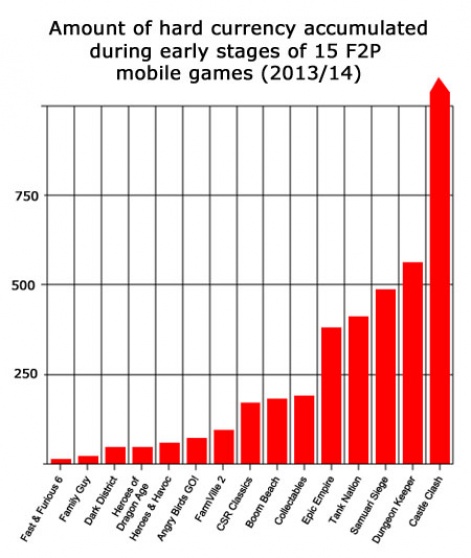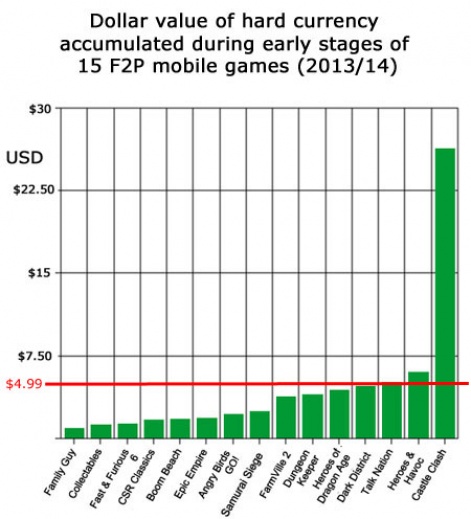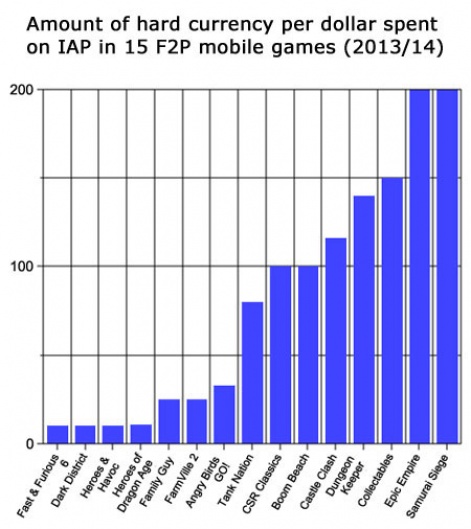As everyone in the F2P mobile game industry should know, reciprocity is core to creating a happy user base as well as generating IAP revenue.
As popularised in Robert Cialdini's Influence: The Psychology of Persuasion, reciprocity is defined as the trait whereby we respond to a positive action with positive action of our own.
Indeed, the first action can be small, but such is the power of reciprocity, the second action will often be magnified.
Giving to gain
So, why is this important for F2P games?
Most games will reward their players with some currency, especially in the early stages, in order to help them understand why it's important in terms of modifying gameplay i.e. speeding up building, improving a car's top speed.
However, while many developers are generous with their soft currency, fewer are generous with the hard currency that can be bought for real money.
Given the power of reciprocity, I think developers should be more generous with their hard currency rewards
Perhaps this is because they are worried that 'they are giving away money', and in a sense they are. But as we learn from reciprocity, giving away something, especially something that doesn't cost you anything but has real value to the recipient, is a 'good thing'.
So, with this is mind, I decided to generate some graphs on the subject.
How generous?
As is generally the case, I've not been totally rigorous in terms of measuring the gameplay time I've spend with each game, so I've labelled it the "early stages" - basically, the first 10 hours or so.
The first graph lists the amount of hard currency a game gives a player during these early stages, typically as a reward for progression and achievement.

As can be seen, there's a strong variation between games such as Kabam's Fast & Furious 6 and TinyCo/Fox's Family Guy, which give out hard currency in measures of tens of units.
In contrast, games such as Space Ape's Samuari Siege and EA's Dungeon Keeper are happy to hand out hundreds of units. (Note we're not comparing the monetary value of these currencies or how they relate to the cost of in-game items.)
When it comes to the most generous game, there's no competition. IGG's Castle Clash destroys the graph's scale, rewarding me with over 3,000 gems.
Hard candy
As we can see, there's plenty of variation in terms of the units of hard currency given out.
But when we convert these into the nominal value that they would cost if a player had to buy them via an in-app purchase, the graph flattens greatly.

Of course, there are still more and less generous games. Family Guy is particularly parsimonious when it comes to handing out Clams, as is Crytek's The Collectables in terms of its Gold.
With a couple of exceptions, F2P mobile games don't reward players with currency worth more than $4.99 during these early stages.
Perhaps this is because $4.99 is a significant IAP price point. For many core games, it's the cheapest value IAP they offer, and even for games that do price lower ($0.99 or $1.99), $4.99 is an IAP that instinctively suggests a player is engaged, both in a game and in progression.
Still, as can be clearly seen, Castle Clash is - once again - the strong outlier, rewarding players with over $25 in hard currency.
Conclusions
So what does it all mean?
One lateral view is to look at the variation in the hard currency per dollar spent (taking the cheapest IAP): something we regularly track in our Moneti$er columns.
Again, we see a lot of variation, from 10 units of hard currency per dollar up to 200, although there seems to be standardisation around the 100-150 range, especially for strategy games like Boom Beach.

The more significant question, however, is can we draw any conclusions about a game's success from the structure of its IAP currency and its reciprocity?
That's much harder, particularly as we're only looking at a small range of titles that's self-selected to be relatively more successful than the vast majority of F2P games released.
My conclusion is that while F2P techniques and IAP economy set-up can have an impact, in most cases it's minor (perhaps +/-10%) compared to a game's overall quality, marketing etc.
After all, despite being extremes on our graphs, both Fast & Furious 6 and Castle Clash have been very successful games.
Yet, given the power of reciprocity, I think developers should be more obvious in highlighting their reciprocity and be more generous with their hard currency rewards. Given the vast majority of players don't pay anything, any technique that will encourage them to progress further in a game while also educating them about how the IAP system works would seem to be worth experimenting with.





















